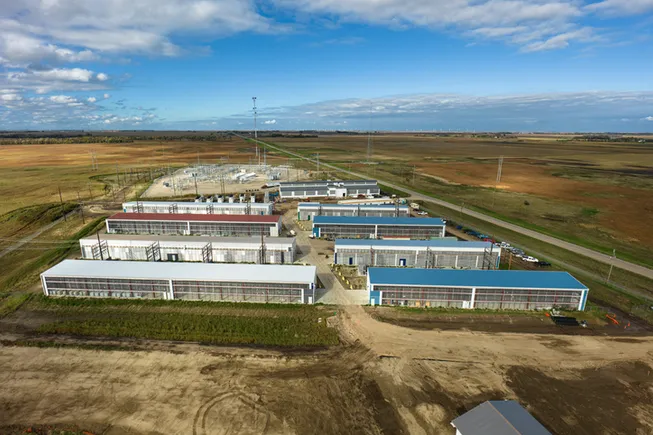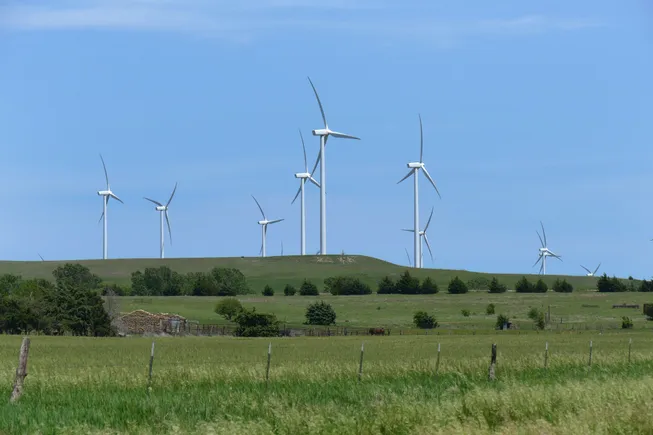
Oil tumbled to a four-year low, following a surprise output increase by OPEC+ and a rapidly escalating global trade war that’s also rattling commodities markets from metals to gas.
Oil’s rout was triggered Thursday by US President Donald Trump deluge of tariffs, which threaten the global economy and energy consumption. Hours later, OPEC+ tripled a planned output hike for May, in what delegates called a deliberate effort to lower prices to punish members that were pumping above their quota.
West Texas Intermediate futures have fallen about 14% in just two days — settling near $61 a barrel in a move similar to steep losses seen during the pandemic — while Brent also ended the day at the lowest since 2021. The declines were exacerbated on Friday by China’s retaliation against the US duties, including a 34% tariff on all imports from the US starting within a week.
Other commodities also slumped as wider financial markets took a hit and fears mounted about weaker demand for raw materials. Copper slid as much as 7.7% to the lowest since January, while benchmark European natural gas futures at one point tumbled more than 10%. Glencore Plc shares plunged more than 9%, with fellow major miners BHP Group and Rio Tinto Group also sliding.
Oil’s retreat represented a dramatic breakout from a price band of about $15 that has paralyzed trading and spurred bets on low volatility for much of the last six months. During that period, OPEC+ supply curbs were seen to put a floor under the market, while the group’s ample spare capacity acted as a ceiling. This week’s unexpected production increase raises questions about whether the alliance will continue to defend higher prices.
The dual hit from OPEC+ and tariffs has prompted a rush by traders and Wall Street banks to reassess their outlook for the market. Goldman Sachs Group Inc. and ING Groep NV are among those lowering their price forecasts, citing risks to demand and higher supplies from the producer group.
“The two key downside risks we have flagged are realizing: namely tariff escalation and somewhat higher OPEC+ supply,” Goldman analysts including Daan Struyven wrote in a note. “Price volatility is likely to stay elevated on higher recession risk.”
At its lowest point on Friday, global benchmark Brent was down more than $10 over the last two days, a scale of decline that would have put it in the 10 largest ever and on a par with some of the steep drops during the pandemic and when prices retreated away from $100 after Russia’s invasion of Ukraine.
The pullback has also had a broader impact on key market gauges. Timespreads softened in a sign of expected looser balances, particularly further along the futures curve. At the same time, bearish oil options volumes soared to the highest level on record yesterday. Oil has also edged into oversold territory on the nine-day relative strength index, suggesting a reversal may be in the cards.
Meanwhile, commodity trading advisers, which tend to exacerbate price swings, switched to 73% short in WTI, compared with 9% short just one day ago, according to data from Bridgeton Research Group. Such a dramatic shift in positioning has only ever occured in the event of a major economic meltdown, most recently the collapse of Silicon Valley Bank in 2023, the group added.
Still, some supply risks remain. The Trump administration has threatened a maximum-pressure policy on oil-producing nations that are subject to US sanctions, including Iran and Venezuela. Any retreat in prices offers a bigger opportunity to restrict output in those nations without having an inflationary price spike.
“With potential supply disruptions stemming from sanctions and tariffs — on both sellers and buyers — oil prices are unlikely to stay below $70 for long,” said Mukesh Sahdev, global head of commodity markets at Rystad Energy.
Oil Prices:
- West Texas Intermediate for May delivery dropped 7.4% to $61.99 a barrel in New York.
- Brent for June settlement slid 6.5% to $65.58 a barrel.
What do you think? We’d love to hear from you, join the conversation on the
Rigzone Energy Network.
The Rigzone Energy Network is a new social experience created for you and all energy professionals to Speak Up about our industry, share knowledge, connect with peers and industry insiders and engage in a professional community that will empower your career in energy.
MORE FROM THIS AUTHOR
Bloomberg



















